Last Updated on April 8, 2023
What breeds come to mind when you think of athletic canines? Powerful canines? What about the cuddliest canines?
Teddy bear dogs, as they’ve come to be called, are selectively bred for maximum cuteness overload.
There’s a bit of confusion around which breeds fall under the “teddy bear” umbrella. Keep reading to learn more about this adorable group.
Quick Navigation
- 1 Crossbreeds that fall under the list of teddy bear dogs
- 2 What does a teddy bear puppy look like?
- 3 Teddy bears’ temperament: are they good pets?
- 4 Care: Are Teddy Bear dogs high-maintenance?
- 5 Do teddy bear dogs have health problems?
- 6 Where to get a teddy bear dog
- 7 Choosing the right teddy bear dog for you
Crossbreeds that fall under the list of teddy bear dogs
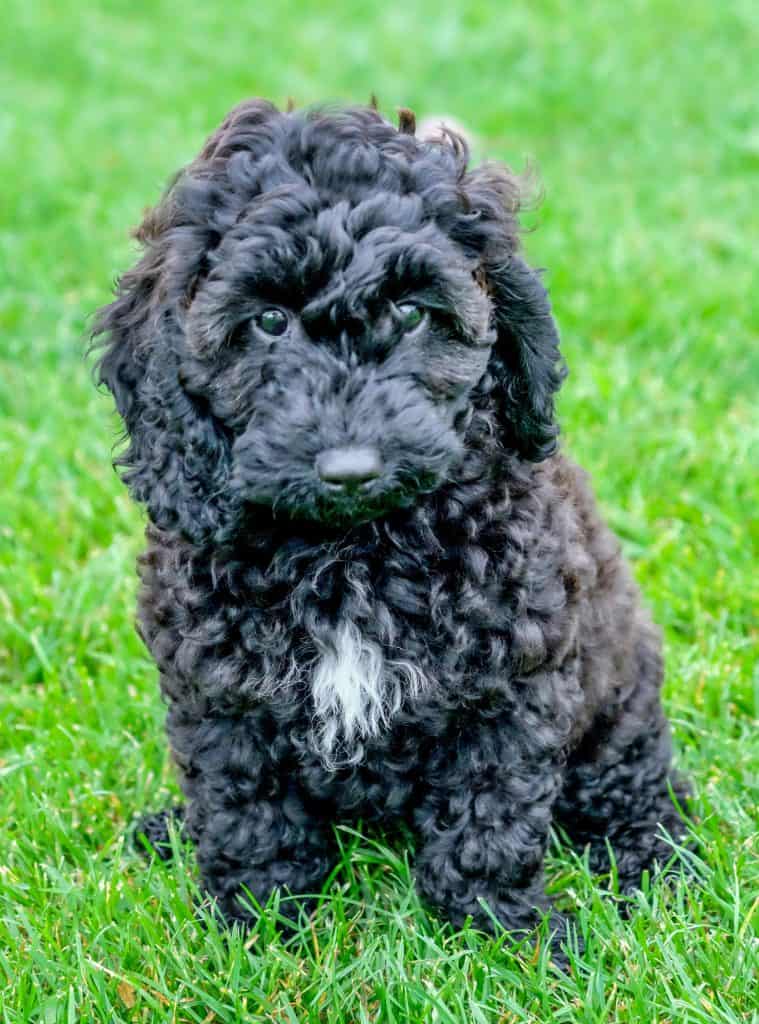
Teddy bear dogs are snuggly pups that bear a striking resemblance to, well, teddy bears. We can trace the origins of the teddy bear breeds back to the 1950s when the Cocker Spaniel and Poodle were crossed to create the perfect therapy dog for handicapped kids.
Over the years, teddy bear dogs grew in popularity. Today, they include several purebreds, like the Pomeranian and Bichon Frise, as well as many crossbreeds. Some of the most common are:
- Cockapoo (Cocker Spaniel and Poodle mix)
- Zuchon/Shichon (Shih Tzu and Bichon mix)
- Poochon/Bichpoo (Poodle and Bichon mix)
- Morkie/Yorktese (Yorkshire Terrier and Maltese mix)
- Cavapoo/Cavoodle (Cavalier King Charles Spaniel and Poodle mix)
- Cairnoodle/Cairnpoo (Cairn Terrier and Poodle mix)
- Westiepoo/Westiedoodle (West Highland White Terrier and Poodle mix)
- Pomapoo (Pomeranian and Poodle mix)
- Pomchi (Pomeranian and Chihuahua mix)
- Cavachon (Cavalier King Charles Spaniel and Bichon mix)
- Shih Poo (Shih Tzu and Poodle mix)
- Maltipoo (Maltese and Poodle mix)
- Schnoodle (Schnauzer and Poodle mix)
- Malshi (Maltese and Shih Tzu mix)
- Shorkie (Yorkshire Terrier and Shih Tzu mix)
- Yorkie Poo (Yorkshire Terrier and Poodle mix)
- Peekapoo (Pekingese and Poodle mix)
- Mini Goldendoodle (Golden Retriever and Miniature Poodle mix)
The combinations are endless, and each teddy bear breed has its own set of pros and cons. Still, there are a few general characteristics that most teddy bears tend to share. Let’s dive in!
What does a teddy bear puppy look like?
Most teddy bear dogs have button noses and round eyes, but the similarities stop there. Each of these pups has a totally unique, totally charming look.
Their ears might stand up like the Cairnoodle’s or flop down like the Cavapoo’s. Some have curved ears while others are pointed. Your teddy bear’s tail could be long or short, curly or straight. Some of them may also have an underbite.
As cute as their features are, the teddy bear dog’s most significant selling points are their cloud-like coats and small stature.
Just watch this video of a Yorkie Poo and see how cute teddy bear dogs are:
How big do teddy bear dogs get?
Small space? No problem! Even with so many breed possibilities, it’s safe to say that teddy bear dogs are the ideal size for apartment life. (And yes, that includes curling up in your lap.)
Teddy bear dogs stop growing sometime between 6 months and 12 months old. By adulthood, most of these snuggly fidos will weigh between 8 to 16 pounds (4 to 7 kg) and stand 8 to 12 inches tall (20 to 30 cm).
Some varieties fall outside of this range. Morkies, Pomapoos, and Pomchis, are all pint-sized pups. Teacup, toy, or mini versions of teddy bear breeds can be even smaller. Beware, though, as these tinier variants can be at higher risk for health issues.
For a bigger teddy bear dog, consider a Mini Goldendoodle, Westiepoo, or even a Schnoodle. They can grow as tall as 17 inches (43 cm) and weigh as much as 30 pounds (14 kg).
Do teddy bear dogs change color?
The texture and length of teddy bear fur vary from dog to dog. Poodle hybrids often have curlier coats, but this isn’t always the case. Depending on your teddy bear’s parents, they could have straight, wavy, or curly hair that ranges from short to long.
Teddy bear coats are often a mixture of colors, but they can be solid as well. Any of these shades could make an appearance in your dog’s fur: black, brown/chocolate, white, tan, grey, apricot, cream, red, or golden.
Not enough variety for you? Some teddy bear dogs actually change color as they get older. This is particularly noticeable in Shih Tzu crosses. Over time, their colors may fade and lighten. Even their hair texture could change!
Are teddy bear dogs hypoallergenic?
Teddy bear dogs are generally good choices for people with allergies or asthma. They don’t shed much, though longer-haired breeds may shed more than others.
To get as close to hypoallergenic as possible, look into a Poodle mix. Cavapoos, Pomapoos, and Yorkie Poos, for example, tend to shed less than non-Poodle teddy bears.
Teddy bears’ temperament: are they good pets?
By and large, teddy bear dogs have lively personalities with a healthy heaping of spunk. They adore attention and are sure to keep you entertained.
Teddy bear dogs are family-focused, no matter what their family looks like. They’ll do well with singles of any age, but they’ll fit in with a larger pack, too.
That includes packs with two-legged toddlers and four-legged fur babies. These breeds get along well with children and other pets–even cats!
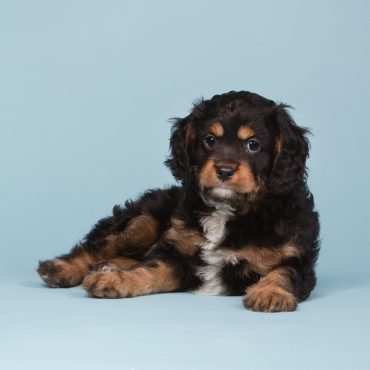
Exercise caution with rowdy playmates, though, be they human or canine. Teddy bear dogs are more robust than they appear, but they’re still vulnerable to being accidentally injured. Gentle play is especially important for the smallest teddy bear varieties, like Morkies or teacup Pomapoos.
During the puppy stage, you may notice your teddy bear dog mouthing and biting. Don’t worry, your sweet, quiet Cavapoo hasn’t suddenly become aggressive.
They’re most likely teething and should grow out of this phase around the 6-month mark. In the meantime, stock up on chew toys and use this time to work on your pup’s bite inhibition.
Velcro dogs to the core, most teddy bear dogs like to be held and snuggled. Nearly all of them want to be at their owner’s side 24/7. While this affection is great, it’s somewhat of a double-edged sword.
Teddy bear breeds are at risk of separation anxiety. They shouldn’t be left alone for long periods. Otherwise, they may turn to problem behaviors like non-stop barking (looking at you, Morkies) or chewing up your sofa cushions to cope.
No matter how separation anxiety manifests in your teddy bear dog, crate training can help them feel more comfortable if they have to be home alone for a short time.
Are teddy bear dogs easy or hard to train?
Teddy bear breeds are usually quite intelligent. Designed to be kid-friendly service dogs, they’ll pick up on commands and routines easily. Plus, making their humans happy is a teddy bear dog’s favorite pastime.
Some teddy bears may be more stubborn or strong-willed than others. Morkies, for example, are notorious for their obstinance. Stay positive and consistent, and your teddy bear dog will react accordingly.
That being said, training and socialization should start as soon as possible. The earlier you begin, the more well-rounded and confident your dog will be. Just look at how many tricks this 8-week-old teddy bear hybrid already knows!
Even in the smartest, most people-pleasing teddy bear puppy, housebreaking can be difficult. Tiny dogs have tiny bladders, after all.
It could take anywhere from a few weeks to a few months before your teddy bear dog is entirely accident-free. Be proactive, and give young teddy bear dogs extra bathroom breaks during potty training.
Care: Are Teddy Bear dogs high-maintenance?
Luckily, most teddy bear breeds don’t require much, but nurturing a dog involves tending to their emotional and physical needs.
Regular grooming, feeding, and exercising are three surefire ways to boost your pup’s happiness and health.
Do teddy bear dogs need to be groomed?
You might hear “minimal shedding” and think that teddy bear breeds don’t require much grooming. Low shedders actually need more regular coat care to remove loose fur.
Try not to go more than a day or two between grooming sessions. Cavapoos, Malshis, and other long-haired teddy bears will need to be brushed daily.
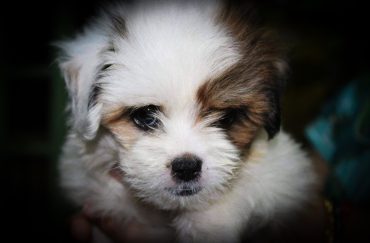
All that brushing can get tiring, so consider the occasional trip to a professional groomer. Your teddy bear dog can rock all sorts of cute hairstyles. Puppy, lion, or teddy bear cuts are popular choices.
Whether you go it alone or take your pup to the doggy spa, find a grooming routine that suits your schedule, and meets your dog’s needs. Neglected teddy bear coats can easily become matted or tangled.
You should also avoid bathing your teddy bear too often. Over-shampooing can dry out their fur and irritate their skin.
Every day, wipe around your pup’s eyes to prevent any drainage from staining their fur. Some owners trim the hair on their teddy bear’s face to keep this area cleaner and stain-free.
Maintaining good dental hygiene is essential, too. Teddy bear breeds like Pomchis and Morkies are prone to gum disease and overcrowding. Brush their teeth several times a week to prevent plaque buildup and tooth decay.
What’s the best diet for a teddy bear dog?
Your teddy bear dog’s dietary needs will depend on their size, age, activity level, and health. Look for protein-packed dry food formulated for your dog’s life stage.
Resist the urge to overfeed your teddy bear dog. Generally, they should get no more than 1.5 cups of food per day, including treats and snacks.
It’s a good idea to spread the day’s kibble over several meals. This is especially important for teacup or mini teddy bears, which may be prone to low blood sugar levels.
You’ll want high-quality treats, too. They’ll go wild for boiled chicken and cooked salmon. Believe it or not, fruits and veggies can be good for your dog, also. Cut an apple into chunks, and watch your fur baby chow down on this healthy snack.

How much exercise should you give your teddy bear?
You may see a burst of the zoomies every once in a while, but most teddy bear dogs have low to moderate energy. At least 30 minutes of a daily walk with play sessions sprinkled here, and there is usually all they need to be happy.
We should note that some varieties have higher energy levels. Cavapoos, Cockapoos, Peekapoos, and even the Poochon will require more activity.
Think a teddy bear dog won’t be a suitable running partner? Think again. Their short legs mean they probably can’t run for miles at top speed, but a jog around the block might be just the ticket.
You can always look into getting a dog carrier backpack, too. These are nice to have handy when you’ve hit your stride, but your teddy bear needs a break.
Feel free to spice up the exercise routine while you’re at it. Westiepoos are skilled at agility, and Pomapoos love to swim. In fact, most teddy bear dogs will thoroughly enjoy anything they do, as long as it’s with you.
Exercise alternatives are particularly important in extreme temperatures. Teddy bear dogs can be sensitive to hot and cold weather, so take preventative measures. Protect their feet from the scorching or icy pavement, and keep outdoor activities brief in summer and winter.
Do teddy bear dogs have health problems?
Generally speaking, teddy bear hybrids tend to be pretty healthy. They have a life expectancy of 12 to 16 years. Some Cockapoos have lived for as long as 18 years! Of course, there’s always a chance that they’ll inherit medical conditions from their parents.
Some of these issues are more prominent in specific breeds. Mini Goldendoodles, for example, are at greater risk for cancer thanks to their Golden Retriever genes. Poodle mixes are more likely to have Addison’s disease.
Other health problems, like epilepsy or joint conditions, affect multiple types of teddy bear dogs. Hip and elbow dysplasia, patellar luxation, and arthritis are possible concerns.
Eye and ear problems, like deafness or cataracts, could crop up, as well. A sneakier eye issue is progressive retinal atrophy, which leads to blindness. Regular vet exams are vital in catching this condition early, as signs often don’t present until the situation has become severe.
Your teddy bear could also experience relatively minor health issues. Food and skin allergies can usually be managed easily. Discuss allergies with your vet if you notice your dog scratching more often or showing signs of an upset stomach after eating.
Where to get a teddy bear dog
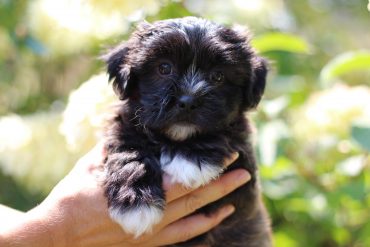
With so many teddy bear breeds to choose from, finding one to adopt or buy is an easy task.
Going through a breeder or kennel is best for owners who want a specific type of teddy bear dog and want to raise it from puppyhood. Owners who don’t have a preference may elect to adopt their new pooch.
How much you’re willing to spend can also help decide whether to rescue or buy. Adoption fees are generally in the $100 to 250 price range. Purchasing from a breeder can cost up to $3000.
We have to remember, though, that the cost of designer dogs would depend on different factors, such as the bloodline of the purebred parents, the breeder’s location, the popularity of the kennel, and availability of pups.
Finding a reputable teddy bear dog breeder
Most breeders will specialize in one or two types of teddy bear dogs, so decide on a couple that suits your lifestyle before contacting someone to purchase a pup. This will help you narrow down your choices and focus on making a well-thought decision.
Trustworthy dog breeders and kennels will have many things in common. Some will proactively offer for you to meet your pup and their parents and show or provide health guarantees for their dogs.
And since they want to make sure that their new family members are going home with the right owner, they won’t mind answering your questions. That means you should also be prepared to answer any questions a breeder will ask!
Don’t rush the search process. We know, we know. You want your new teddy bear dog today. But you’ll be much happier if you wait for just the right pup from just the right place.
If you’re itching to see what teddy bear pups are out there, you can take a look at these breeders:
- Charlotte Dog Club (Cleveland, NC) – charlottedogclub.com
- Furry Babies Inc. (IL) – furrybabiesinc.com
- Petland Hoffman Estates (IL) – petlandhoffmanestates.com
Let’s not forget marketplaces such as Greenfield Puppies and Lancaster Puppies, who have a lot of designer pups available nationwide! You can also check Facebook pages like Cavapoo Acres in NY.
Finding teddy bear dogs for adoption
Especially for owners who want to know exactly what they’re getting into, adopting an older teddy bear dog is often a good choice.
You’ll know what color your dog will be, how big they’ll get, and what kind of personality they have. The one thing you won’t know is precisely what breeds make up your new companion.
You could look into adopting a retired service teddy bear. Going this route may not be feasible for everyone, though. It’s often just as expensive as buying from a breeder and involves long waitlists and rigorous selection criteria.
A more common approach is to go through rescue centers. You’re likely to find teddy bears in need of a forever home at local shelters, but you can also check breed-specific organizations for purebred and hybrid teddy bear dogs.
- United Yorkie Rescue (nationwide) – unitedyorkierescue.org
- Poodle and Pooch Rescue (FL) – poodleandpoochrescue.org
- Bichon and Little Buddies Rescue (WI) – www.bichonrescues.com
- Ruff Start Rescue (Princeton, MN) – ruffstartrescue.org
- Save a Yorkie Rescue (Milton, PA) – saveayorkierescue.org
Choosing the right teddy bear dog for you
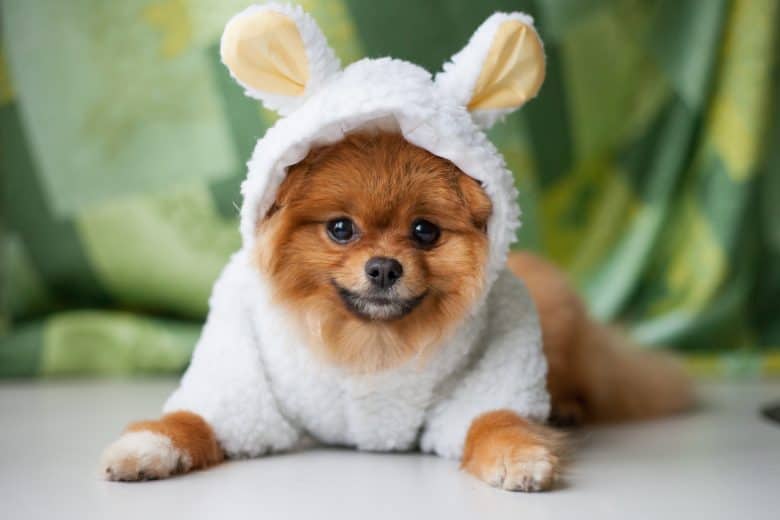
It’s no question that teddy bear dogs are the epitome of endearing. Owning one of these pups is like having a living, breathing stuffed animal.
Teddy bear breeds are ideal for pet parents who can’t get enough of their fur babies. The ultimate companion dog, they’d glue themselves to you if they could.
What do you think about these lovable lap dogs? Share with us in the comments!
Cess is the Head of Content Writing at K9 Web and a passionate dog care expert with over 5 years of experience in the Pet Industry. With a background in animal science, dog training, and behavior consulting, her hands-on experience and extensive knowledge make her a trusted source for dog owners.
When not writing or leading the K9 Web content team, Cess can be found volunteering at local shelters and participating in dog-related events.
